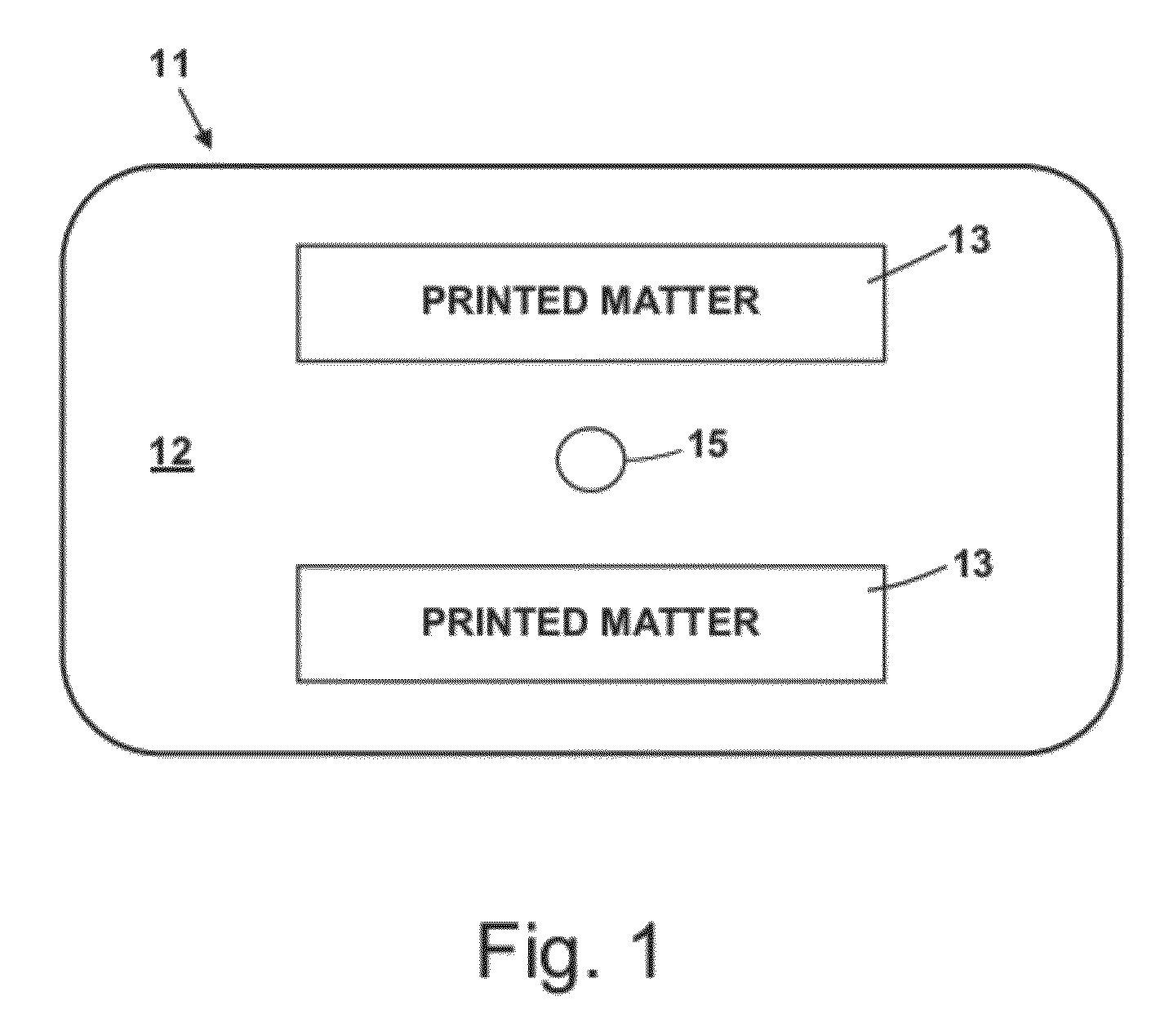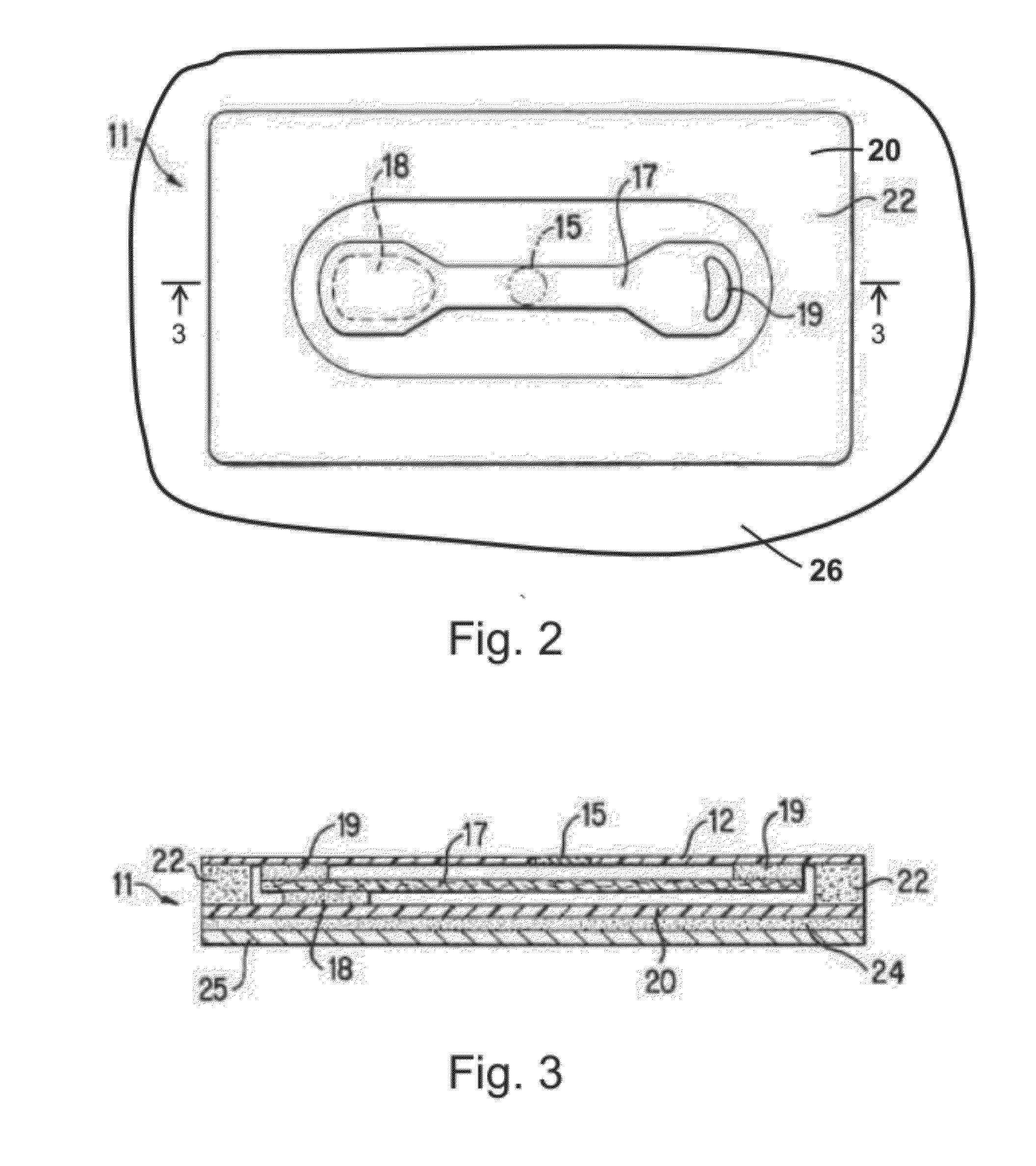Temperature-activated time-temperature indicator
a time-temperature indicator and activated technology, applied in the direction of thermometers using mean/integrated values, instruments, heat measurement, etc., can solve the problems of limiting the ability of time-temperature indicators to monitor cumulative time-temperature exposure, and the requirement of commercial deployment of known time-temperature indicators, etc., to achieve good contrast and intense color
- Summary
- Abstract
- Description
- Claims
- Application Information
AI Technical Summary
Benefits of technology
Problems solved by technology
Method used
Image
Examples
example 1
Stock Poly(hexadecylmethacrylate)
[0271]50 g of a solution of 30-35 wt % poly(hexadecylmethacrylate) in toluene (Sigma-Aldrich product number 182109), weight-average molecular weight of about 200,000 g / mol by gel permeation chromatography according to the supplier, is employed as received from the supplier. The toluene is removed by rotary film evaporation with mild heating, at about 50° C., for 3 hours. About 10 g of an opaque white polymeric material is isolated that is solid at room temperature and melts to become a clear viscous liquid when heated. The solid poly(hexadecylmethacrylate) has a melting point, measurable by differential scanning calorimetry, of about 25° C. Poly(hexadecylmethacrylate) with a lower molecular weight can have a lower melting point, for example, a melting point of about 16° C.-21° C.
[0272]10 g of the isolated poly(hexadecylmethacrylate) is melted by heating and 0.1 g (about 1% by weight) of Oil Red O dye (Sigma-Aldrich) is dissolved in the molten poly(he...
experiment 1
Exposure at Various Temperatures (Example 1 Polymer)
[0274]A first one of the four indicator samples prepared in Example 1 is placed in a water bath at 20° C. and is observed at intervals of about 1 week each for a period of 3 months. No advance of the dyed poly(hexadecylmethacrylate) along the wick towards the window is observable at the end of 3 months. The window remains white throughout the test.
[0275]A second one of the four indicator samples prepared in Example 1 is placed in a water bath at 30° C. and is observed at intervals of 2 to 5 days each. The dyed poly(hexadecylmethacrylate) advances slowly along the wick towards the window. The window is initially white, remains white for at least 20 days, and turns bright red at the end of about 1 month. The color change from white to bright red occurs rapidly, providing a usefully sharp end point signal.
[0276]A third one of the four indicator samples prepared in Example 1 is placed in a water bath at 37° C. and is observed daily. Th...
example 2
Stock Poly(octadecylmethacrylate)
[0279]Example 1 is repeated with the difference that 50 g of a 30-35 wt % solution in toluene of poly(octadecylmethacrylate) (Sigma-Aldrich product number 182338) is used in place of the poly(hexadecylmethacrylate) used in Example 1. According to the supplier, the poly(octadecylmethacrylate) has a molecular weight of about 170,000 g / mol by gel permeation chromatography. The polymer has a melting point, measurable by differential scanning calorimetry, of about 32° C. to 34° C.
[0280]Four indicator samples are prepared as described in Example 1, using the polymer described in Example 2, with the difference that no opaque ink is applied to the outside of the indicator. Thus, the entire wick is exposed to view instead of just the window region being visible.
PUM
 Login to View More
Login to View More Abstract
Description
Claims
Application Information
 Login to View More
Login to View More - R&D
- Intellectual Property
- Life Sciences
- Materials
- Tech Scout
- Unparalleled Data Quality
- Higher Quality Content
- 60% Fewer Hallucinations
Browse by: Latest US Patents, China's latest patents, Technical Efficacy Thesaurus, Application Domain, Technology Topic, Popular Technical Reports.
© 2025 PatSnap. All rights reserved.Legal|Privacy policy|Modern Slavery Act Transparency Statement|Sitemap|About US| Contact US: help@patsnap.com



